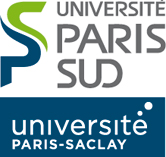Tag: Team seminar
Étude énumérative des intervalles dans les treillis de type Tamari
summary: Le treillis de Tamari est un ordre partiel sur les objets Catalan. De nombreuses descriptions de ce treillis donnent lieu à de nombreuses familles de généralisations, notamment les treillis m-Tamari, nu-Tamari et m-Cambriens. Après une "visite guidée" dans ce zoo des généralisations du treillis de Tamari, je présenterai mon ...
Edge k-q-colorability of graphs
summary: Given positive integers k, q, we say that a graph is edge k-q-colorable if its edges can be colored in such a way that the number of colors incident to each vertex is at most q and that the size of a largest color class is at most k ...
The freezing threshold for uniformly random colourings of sparse graphs
summary: Given a random Δ-regular graph G, it holds that χ(G) ~ Δ / (2 ln Δ) with high probability. However, for any ε > 0 and k large enough, no (randomised) polynomial-time algorithm returning a proper k-colouring of such a random graph G is known to exist when k < (1−ε ...
Musical juggling: from combinatorial modeling to computer assistance with artistic creation (a thesis in the making)
summary: Musical juggling consists of producing music by the very act of juggling. In this context (stemming from a
collaboration between computer science researchers at LISN and a juggling artist), we refer more specifically to
juggling with balls that each produce a musical note when caught.
The aim of this ...
The χ-binding function of d-directional segment graphs
summary: To color a graph properly, one needs at least as many colors as the size of its biggest clique; therefore, the chromatic number χ is lower-bounded by the clique number ω. In general, there are no upper bounds on χ in terms of ω. The graphs for which we ...
Complexité en états : Renverser un langage réduit la complexité de l'opération racine.
summary: Les automates (DFA) sont des machines à états qui acceptent ou rejettent des mots. L'ensemble des mots reconnus par un automate est son langage. Les langages rationnels coïncident avec les langages reconnaissable par des automates. Ici nous allons nous intéresser à une mesure, à savoir la complexité en ...
Forecasting multivariate time series with attention mechanism and unsupervised learning
summary: In the realm of newborn healthcare, identifying neurological pathologies has traditionally relied on the expertise of medical professionals, who perform visual assessments. However, due to the limited number of such experts available, there is an urgent need to develop a pre-diagnostic tool capable of early detection of abnormal neurological ...
Beyond the fractional Reed bound for triangle-free graphs
summary: The notion of fractional colouring is an important concept in graph theory that is commonly used to extend the notion of graph colouring beyond integer values. It is a relaxation of the traditional chromatic number, allowing for real-valued weights or probabilities associated with each independent set of a graph ...
The Domino problem on rhombus-shaped tiles.
summary: The word tiling is a name for several models: geometrical tilings, where you tile the plane with geometrical shapes like a jigsaw puzzle; and symbolic tilings, where you tile the plane while matching colors on the edges of tiles. You can use both kinds of constraints; a well-known example ...
Quantifiying the robustness of dynamical systems: relating time and space to length and precision
summary: Reasoning about dynamical systems evolving over the reals is well-known to lead to undecidability. In particular, it is known there cannot be decision procedures for first-order theories over the reals, or decision procedures for state reachability. However, various results in the literature have shown that decision procedures exist when ...


